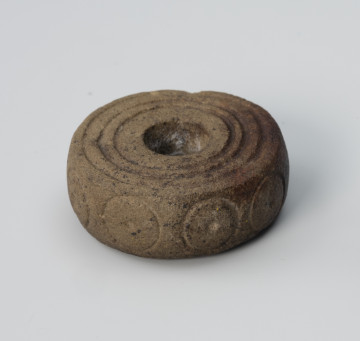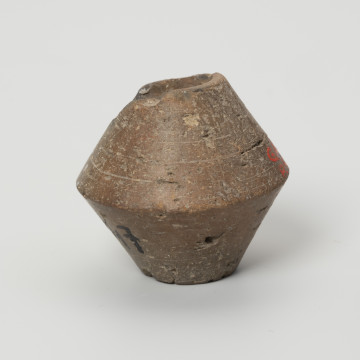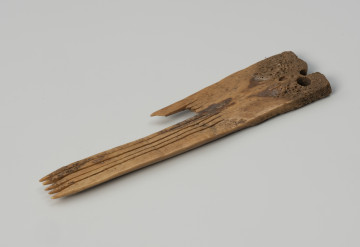
Spindle whorl
900 — 1100
National Museum in Szczecin
Part of the collection: Middle Ages
The spindle was discovered at the site of an early medieval settlement in Kamień Pomorski, during excavations carried out in 1962 by Władysław Garczyński (1925-2010). This object was used during spinning to twist and wind yarn. Most spindles known from archaeological sources are wooden round rods, tapering towards the ends. They were made using a knife, and the variety of their forms was dictated by the individual needs of the user. Clay or stone spindle-whorls were an additional element fitted to the spindles, keeping them upright and giving them stable rotation during yarn spinning. Depending on the type of fibre to be prepared, the appropriate spindle-whorl was selected. Heavier spindle-whorls were used when twisting vegetable fibres that did not require fast movement, while lightweight spindle-whorls were chosen for fleece processing, allowing a high rotation frequency. Some spindles bear marks in the form of shallow notches. They are interpreted as elements of magical significance or ownership marks. There is also an abundance of decorated varieties, most often embellished with threads of straight and zigzag lines. Grzegorz Durdyń
Author / creator
Object type
weaving equipment, spindle (textile)
Technique
planing
Material
wood
Origin / acquisition method
field research
Creation time / dating
Creation / finding place
Owner
Muzeum Narodowe w Szczecinie
Identification number
Location / status

900 — 1100
National Museum in Szczecin

951 — 1200
National Museum in Szczecin

1176 — 1200
National Museum in Szczecin
DISCOVER this TOPIC
Museum of King Jan III's Palace at Wilanów
DISCOVER this PATH
Educational path